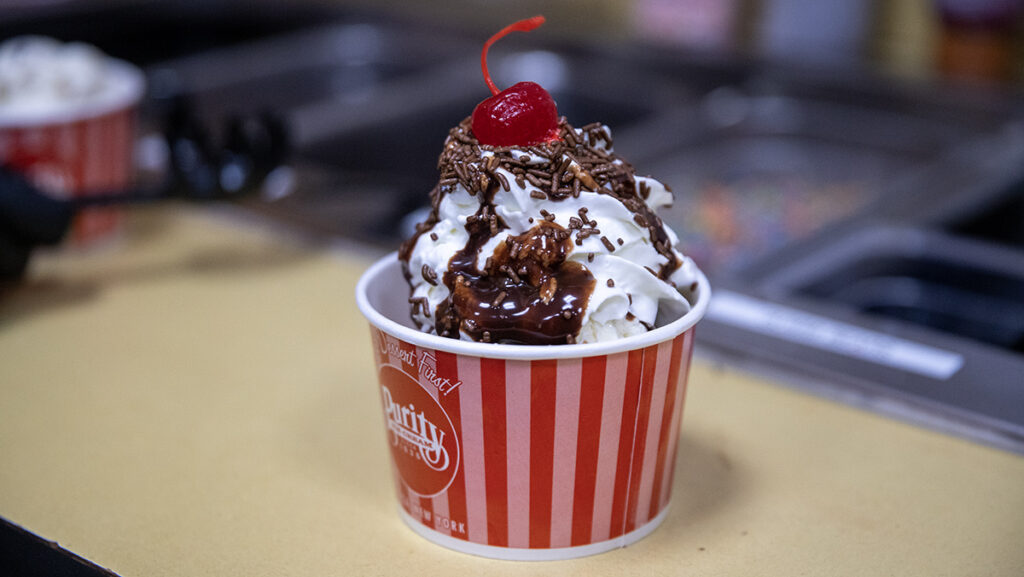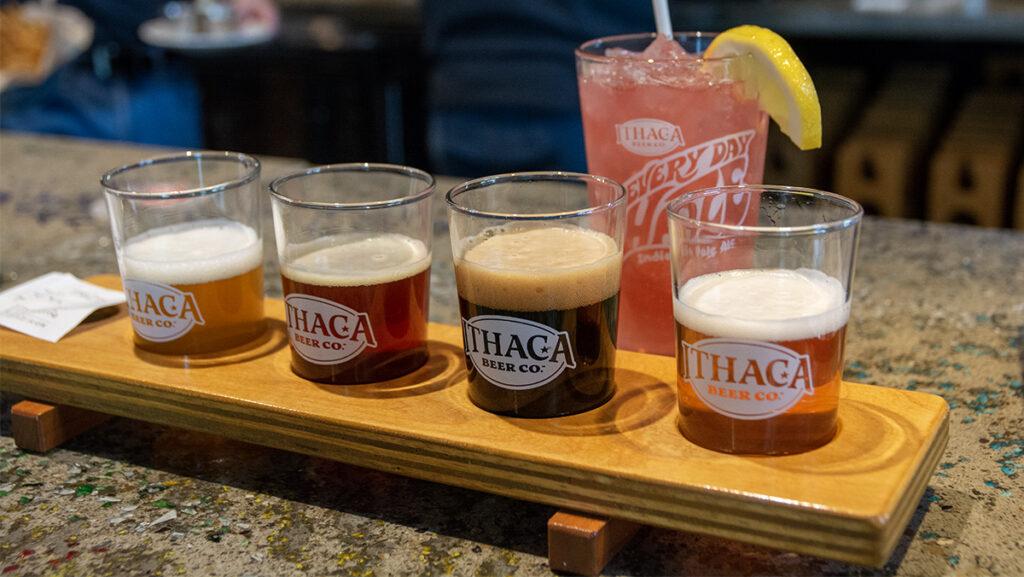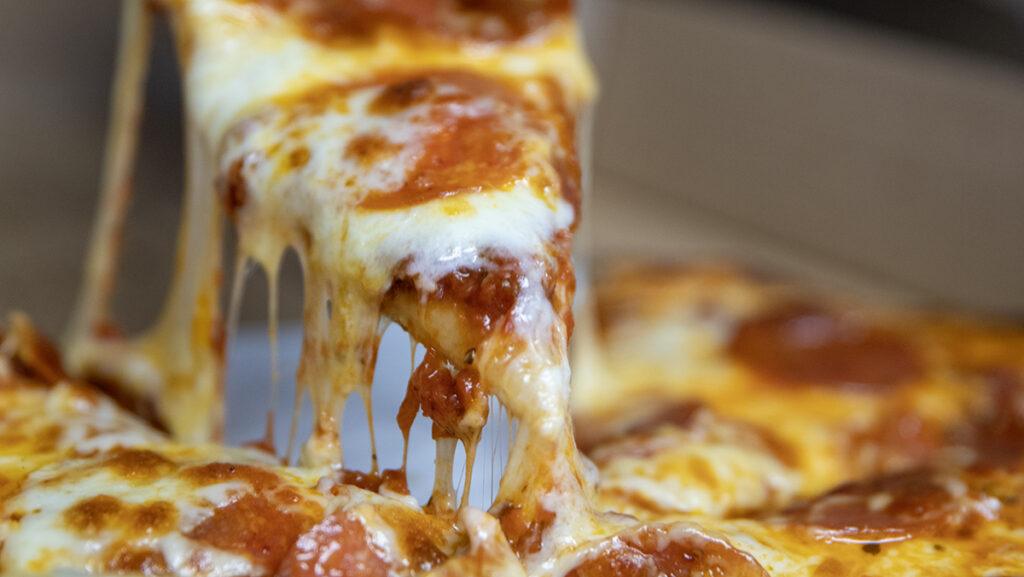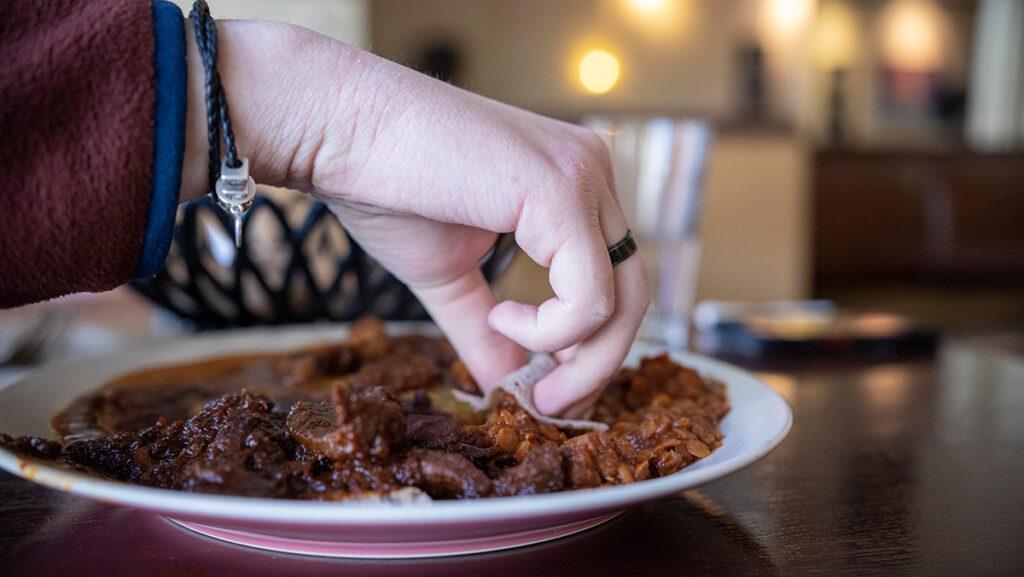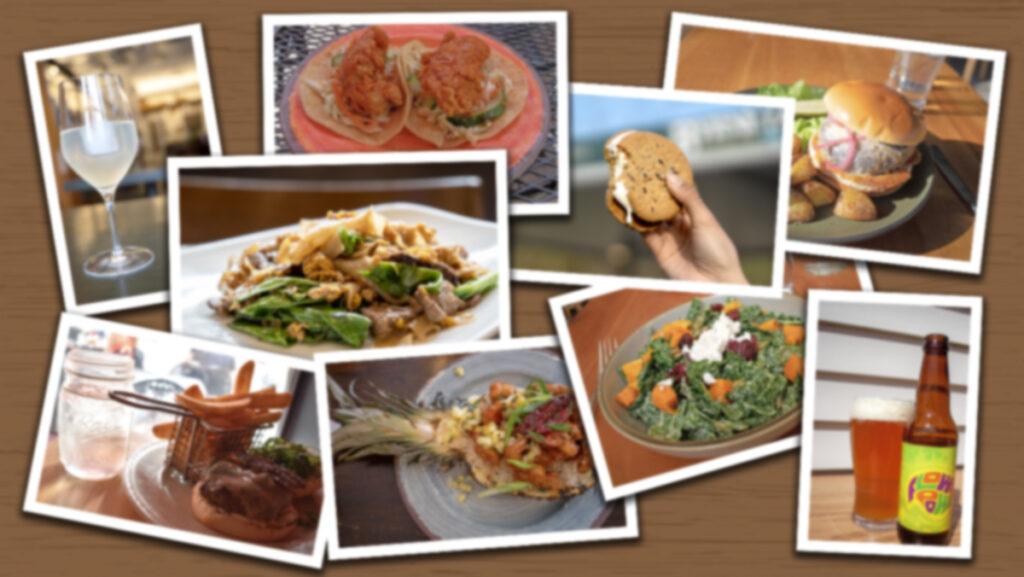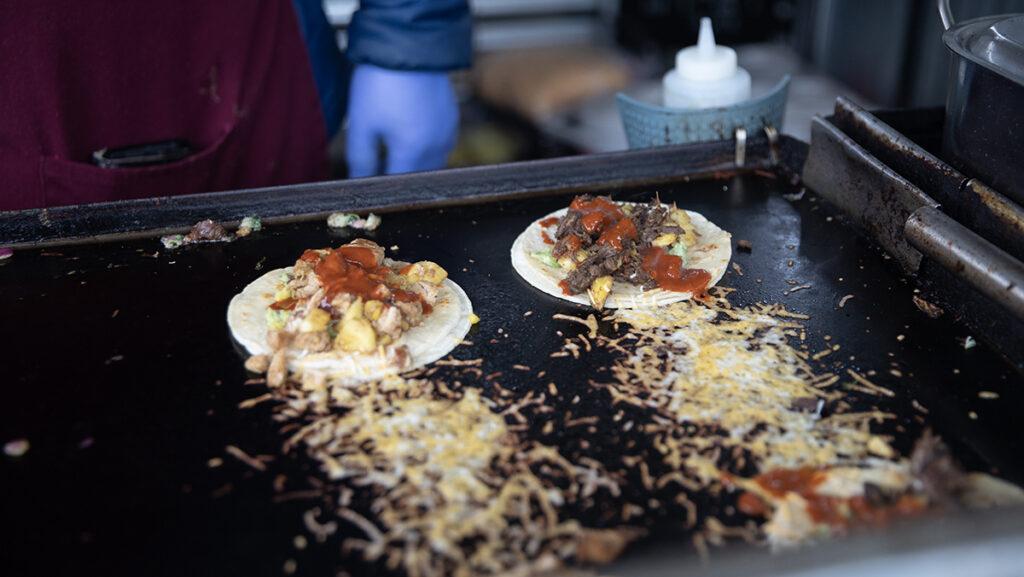The ice cream sundae, made with two to three scoops of fresh ice cream, a drizzle of warm syrup and with a variety of toppings from crunchy peanuts to sweet fruit, is a staple dessert for many Americans. However, its origin is still up in the air as Ithaca and Two Rivers, Wisconsin, have claimed the creation of the frozen treat for many years. Both Ithaca and Two Rivers have their own story on how the ice cream sundae came into existence.
Ice cream floats were a popular item sold at soda fountains, according to TastingTable. However, the implementation of blue laws prevented businesses from selling goods, food and drinks, as well as engaging in any form of entertainment on Sunday. Because of the popularity of sodas as well as ice cream sodas, it was one of the items that were prohibited on Sunday. To combat this, pharmacies instead took away the soda and just served ice cream with toppings since that was not included in what was banned in the blue laws, according to Savannahnow.
The Rev. John M. Scott of the Unitarian Church in Ithaca and Chester Platt, owner of the Platt and Colt Pharmacy in Ithaca, regularly met at Platt’s pharmacy after Sunday service, according to What’s Cooking America.
In 1892, Platt fixed himself and Scott some ice cream and decided to garnish the plain, vanilla taste with a few cherries along with a splash of cherry syrup. As a result, Scott decided to name the dessert after the day it was created.
Though this is Ithaca’s side of the story, in Two Rivers, the sundae was created after George Hallauer asked a soda fountain owner, Ed Berner, for a drizzle of chocolate syrup on his ice cream. Berner sold the sundae on Sundays until a little girl wanted one on a different day of the week, according to Roadside America.
Author Michael Turback has written books about cocktails and hot chocolate as well as the Ithaca Farmers Market. Turnback is also known for his books about ice cream sundaes, like “Ice Cream Sundae: 100 Greatest Fountain Formulas” and “A Month Of Sundaes.” In these books, Turnback discusses the origins of the sundae in Ithaca and provides many unique ice cream recipes for the reader to try.
Turback said that while it was common for people to put syrup on their ice cream before 1892, the ice cream sundae was created once a cherry was placed on top, which he said was done in Ithaca.
“You can never take it away from Ithaca because of the newspaper ad that Chester Platt put in papers,” Turback said. “The idea of the cherry on top has become sort of part of the culture, not only in relation to the sundae but anything special we refer to as well.”
Turback said students from Cornell University helped make the sundae a national dessert because they were able to quickly spread the word.
“Cornell students from all over the country would [come to Ithaca] and they would have the ice cream sundae at the Platt Pharmacy,” Turback said. “But when they went home, they would tell their own druggists about the ice cream sundae. So you would have to assume that in order for the idea of a dessert to become a national dessert, it would have to come from a place that had people from a little town but had students that came from all over the country.”
Walt Peck, who is treasurer at the Unitarian Church, said the church has Sundae Sundays every fall not only to commemorate the day the sundae was created but to give back to the community.
“I think it’s just simply a nice family thing we do,” Peck said. “We’re all seeking a way to connect to history, both institutional history and our own cultural history.”
Additionally, Peck said that while he does not know whether the stories from Ithaca or Two Rivers are true or not real or not, he enjoys how Ithaca celebrates the sundae.
“We have so few traditions going way back,” Peck said. “Here we have all this bounty, and we don’t get to celebrate where we came from often enough.”
Holly Engelland, president and board member of Two Rivers Historical Society, a museum in Wisconsin, said the United States postal service launch of the ice cream stamp in 2016 solidified that the sundae was created in Two Rivers.
“Well, it’s an interesting story,” Engelland said. “Either way, for [Ithaca] or for us, it’s a claim to fame kind of thing. And I’m sure that there are visitors that come to our museum. They say they come, you know, because of the ice cream sundae, notoriety and things like that.”
Engelland said that the Washington House and Visitor Center has an ice cream parlor that serves 16 different flavors with a variety of toppings, but one topping people enjoy is the rhubarb sauce made from the fresh rhubarb that grows during summertime.
“People just love our rhubarb sundae,” Engelland. At the beginning of summer when rhubarb is growing around here, some ladies that are volunteers cook up the special rhubarb sauce and they make it and then they freeze it. And so until the rhubarb sauce runs out, we’ll serve the rhubarbs Sunday.”
Makaylah Hebbard, manager of Towers Eatery, who is from the town of Spencer, New York, said that dairy being a part of Ithaca’s agriculture is the main reason she believes the sundae was created in Ithaca.
“I don’t think I have visited anywhere else that has so many ice cream stands,” Hebbard said. “That becomes something that we’re known for. Purity is a huge brand and obviously, they’ve been here for quite a while. And they touch a lot of places like their partnership with Byrne Dairy, which is a nationwide company. So it has to connect all back together to a certain extent.”
Additionally, Hebbard said that she has been working on implementing sundaes to the Towers Eatery menu and has already added five flavors: Brownie, Hot Fudge, Candy Shoppe, Churro and Cookies and Cream Overload.
Furthermore, Hebbard said that while the ice cream that is used in Towers Eatery is from Purity Ice Cream, she wants to make original sundaes and not copy the menu from Purity.
“We are not affiliated with them in any other way than the ice creams and, like, why not make it a Ithaca College thing,” Hebbard said. “It gives us a little more playroom with the menu with the things that we serve with how often we can run specials and honestly how fast I can create a menu because if I have to create something that purity is going to say yes [to], I’ll put my stamp on this — it’s a lot different than having our own like creative liberty with it.”
Regardless of the sundae’s contested origins, it will continue to be enjoyed around the world in all its forms no matter what the scoop is.


